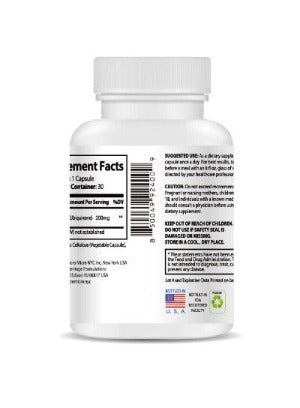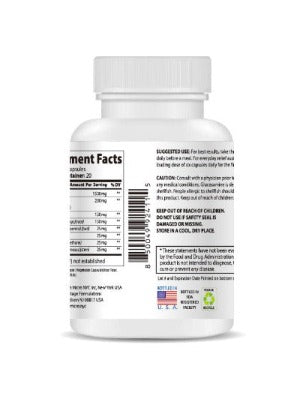How to Stop Itchy Eyes Caused by Allergic Conjunctivitis: A Comprehensive Guide
Allergic conjunctivitis, a common and often debilitating condition, affects millions worldwide. Characterized by intense itching, watery eyes, redness, and swelling, it significantly impacts daily life. Understanding the causes, symptoms, and management strategies is crucial for effectively alleviating this condition and regaining comfort. This comprehensive guide explores various methods to stop itchy eyes caused by allergic conjunctivitis, integrating practical advice with the introduction of a helpful product to support your relief.
Understanding Allergic Conjunctivitis: Causes, Symptoms, and the Role of the Immune System
Allergic conjunctivitis is an inflammatory response of the conjunctiva—the delicate membrane lining your eyelids and covering the white part of your eye. This inflammation is triggered when your immune system overreacts to harmless substances, known as allergens. These allergens are diverse and can include pollen (from trees, grasses, and weeds), pet dander, dust mites, mold spores, certain cosmetics, medications, and even some food particles.
When you encounter an allergen, your immune system identifies it as a threat and launches an immune response. This involves the release of histamine and other inflammatory chemicals, leading to the characteristic symptoms of allergic conjunctivitis. The severity of your reaction depends on factors such as the type of allergen, the level of exposure, and your individual sensitivity. Some individuals might experience mild discomfort, while others may suffer significant vision impairment.
Common Symptoms of Allergic Conjunctivitis: A Detailed Look
- Intense Itching: This is often the most prominent and disruptive symptom, leading to constant rubbing and irritation.
- Watery Eyes (Excessive Tearing): Your eyes produce excess tears as part of the body's attempt to flush out the allergen.
- Redness (Hyperemia): Blood vessels in the conjunctiva dilate, making the whites of your eyes appear red and inflamed.
- Swelling (Edema): Your eyelids may become puffy and swollen, sometimes obscuring your vision.
- Burning or Stinging Sensation: This discomfort often accompanies the itching and tearing.
- Light Sensitivity (Photophobia): Bright lights can become intensely uncomfortable and even painful.
- Mucus Discharge: A stringy, sticky mucus may be present, further contributing to irritation.
- Eyelid Crusting: In severe cases, a crusty discharge may form on the eyelids, particularly upon waking.
Understanding these symptoms is the first step toward effective management. The presence of multiple symptoms often indicates a more significant reaction requiring more aggressive management strategies.
Effective Strategies to Manage Itchy Eyes: A Multi-Pronged Approach
Managing allergic conjunctivitis requires a comprehensive approach that combines allergen avoidance, symptomatic relief, and, in some cases, medical intervention. No single strategy works for everyone, and an individualized plan is often the most effective.
1. Allergen Avoidance: Proactive Steps to Reduce Exposure
Minimizing your exposure to known allergens is crucial in long-term management. This requires careful identification of your specific triggers and implementing strategies to reduce contact.
- Comprehensive Home Cleaning: Regularly dust and vacuum your home, paying close attention to carpets, upholstery, and bedding. Use HEPA filters in your vacuum cleaner to capture microscopic allergens.
- Bedding Hygiene: Wash your sheets, pillowcases, and blankets weekly in hot water (at least 130°F) to kill dust mites and remove their droppings.
- Pet Management: If you have pets, bathe them regularly, keep them out of your bedroom, and use pet-dander-reducing products.
- Pollen Monitoring: Track pollen counts in your local area and limit outdoor activities during peak pollen seasons. Stay indoors on windy days.
- Air Purification: Use high-efficiency particulate air (HEPA) filters to remove allergens from the air in your home.
- Seasonal Changes: Adjust your approach based on seasonal allergens. For example, focus on pollen during spring and summer and dust mites during fall and winter.
2. Symptomatic Relief: Strategies for Immediate Comfort
While avoiding allergens is essential, immediate relief from symptoms is crucial. Several methods can help soothe your irritated eyes:
- Cold Compresses: Applying cool, damp compresses to your eyes for 10-15 minutes at a time can reduce swelling and soothe itching.
- Artificial Tears (Lubricants): These over-the-counter eye drops help wash away allergens, provide lubrication, and alleviate dryness and irritation.
- Over-the-Counter Medications: Antihistamine eye drops can be highly effective in reducing itching, redness, and swelling. Follow label instructions carefully.
- Warm Compresses (for Mucus): If you have thick mucus build-up, warm compresses can help loosen and remove it, promoting drainage.
- Eyelid Hygiene: Gently wash your eyelids with a clean, damp cloth to remove any crusting or discharge.
3. Medical Intervention: When Professional Help is Necessary
If home remedies are insufficient, or if your symptoms are severe or persistent, consult an ophthalmologist or allergist. They can perform a thorough examination, conduct allergy testing to identify specific triggers, and recommend appropriate medical treatments.
Medical interventions may include prescription eye drops (steroidal or non-steroidal anti-inflammatory medications), oral antihistamines, or immunotherapy (allergy shots) for long-term management of your allergic conjunctivitis.
Introducing Wise Quest Soothing Eye Patches
Incorporating a soothing eye treatment into your routine can significantly enhance your comfort levels. The Wise Quest Soothing Eye Patches - 3-Month Wellness Pack offers a natural and convenient way to alleviate various eye-related problems, including those associated with allergic conjunctivitis. These patches are infused with traditional Chinese herbal medicine, carefully selected for their soothing and anti-inflammatory properties. The carefully chosen herbs work together to:
- Reduce redness and swelling
- Soothe itching and irritation
- Relieve dryness and fatigue
- Promote healthy blood circulation
The Wise Quest Soothing Eye Patches - 3-Month Wellness Pack provides a 3-month supply for consistent use, allowing for the cumulative benefits to manifest over time. The easy-to-use patches are applied directly to the eyelids, offering targeted relief. They are designed to complement other management strategies, adding an extra layer of comfort and support.

Remember, consistent application of the patches alongside other preventative measures will yield the best results.
Conclusion: A Personalized Approach to Lasting Relief
Managing allergic conjunctivitis effectively requires a personalized approach, integrating allergen avoidance, symptomatic relief, and potentially, medical intervention. The Wise Quest Soothing Eye Patches - 3-Month Wellness Pack can serve as a valuable addition to your management strategy, providing soothing relief and promoting overall eye health. By understanding your triggers, actively avoiding allergens, and utilizing appropriate management techniques, you can significantly reduce the impact of allergic conjunctivitis and improve your quality of life. If symptoms persist or worsen, always seek the guidance of a healthcare professional for a proper diagnosis and tailored treatment plan.









